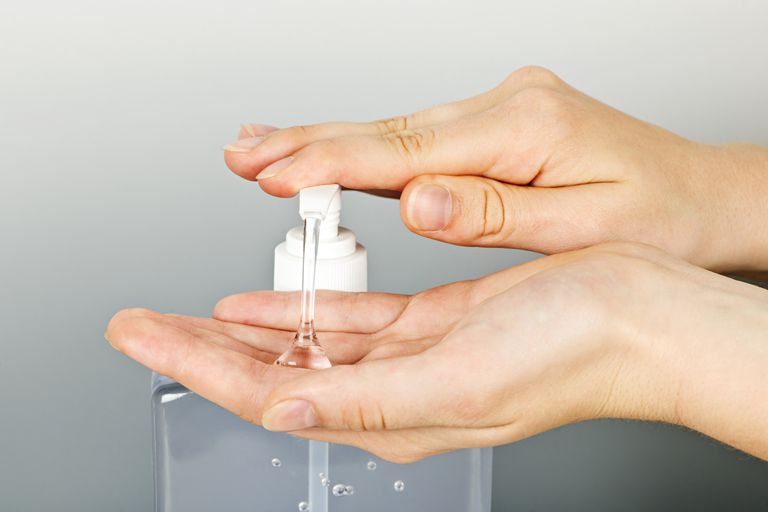
In hospitals, one bacterial species is becoming increasingly tolerant to the alcohols used in hand sanitizers, according to research published Wednesday in the journal Science Translational Medicine.
Globally, hospitals use isopropyl or ethyl alcohol-based disinfectants, such as hand rubs, to prevent patients from becoming sick from many germs. These are the same active ingredients found in hand sanitizers available for personal use and at schools — but that doesn’t mean people should give up on them.
The bacterium Enterococcus faecium resides in our guts, but if encountered in a hospital, it can cause various complicated infections affecting the abdomen, skin, urinary tract and blood. This particular bug is a member of the
Enterococci family, which ranks as the fourth and fifth leading cause of sepsis, a life-threatening bloodstream infection, in North America and Europe, respectively.
Many hospital-acquired infections have decreased or been kept in check by Australia’s strict hygiene practices that rely on alcohol-based hand sanitizers. Yet drug-resistant E. faecium infections have increased in Australian hospitals over time, according to the study authors.
This alarming pattern prompted them to investigate whether E. faecium might be developing resistance to the alcohols used in hand rubs.
Another form of resistance
The researchers analyzed 139 bacterial samples from two Melbourne hospitals collected over 19 years ending in 2015. They studied how well each sample survived when exposed to diluted isopropyl alcohol.
The isolates gathered after 2009 were, on average, more tolerant to the alcohol compared with bacteria taken from before 2004, the researchers discovered. Conducting mice experiments and further analysis, they also saw that alcohol-tolerant bacterial samples harbored several genetic mutations involved in metabolism, which made them better equipped to live in the gut.
Although the results suggest that microbes can adapt to alcohols and other ingredients found in disinfectants, this conclusion cannot be drawn until more research is done, the researchers warn.
“There are two things we are working on,” said Tim Stinear, a co-author of the study and professor at the University of Melbourne. “One is understanding exactly how the bacteria are becoming more tolerant. … The second is what’s going on in other parts of the world, and we are working with colleagues around the world to address that.”
One-third of all enterococcal infections in Australian hospitals are caused by E. faecium, according to Stinear and his co-authors. Of these, 90% were ampicillin-resistant strains, and half of those were resistant to vancomycin, another common antibiotic. Even when doctors try a higher-grade antibiotic to treat such illnesses, the outcome may be further drug resistance — and a longer-lasting infection for the patient.
Study co-author Paul Johnson, an infectious diseases professor and director of research at Austin Health in Melbourne, said that when it comes to preventing certain outbreaks, including vancomycin-resistant enterococci, hospitals might need to use more than standard precautions such as hand hygiene.
“We might need to specifically add additional control measures,” he said. Such measures could include using an additional bacteria-killing agent, such as chlorhexidine, to sanitize hands in some medical care settings.
True perhaps in hospitals, but the same might not apply to the world at large.
Don’t throw away the hand sanitizer
“The bottom line is, this is a really good study,” said James Scott, a professor at the Dalla Lana School of Public Health at the University of Toronto.
“It’s one of these things that microbiologists thought might happen for a long time, but no one really bothered to test it,” said Scott, who did not participate in the research. Now, he said, it’s “pretty clear” that alcohol-resistance does happen.
Yet, he added, the results might not translate to the everyday use of hand sanitizers.
“The germs that were tested in this study are really hospital-based germs, not the kind of thing you would encounter in the community routinely,” he said. In the community, people use hand sanitizers to kill germs that spread foodborne illness, such as listeria and salmonella.
“The hospital situation is very different,” he said, explaining that in the closed environment of a hospital with highly susceptible patients, there’s an opportunity for organisms to evolve. “It can lead over time to a growth in resistance.”
“Rubbing alcohol has long been used in medicine as a disinfectant for skin surfaces and environmental surfaces,” Scott said. “It has been generally thought that rubbing alcohol was fairly safe from the emergence of resistance amid susceptible germs. This interesting and carefully done study refutes that assumption.”
Scientists have known for a long time that rubbing alcohol is not a universal disinfectant, because a number of important germs are highly resistant to disinfection by alcohol, he said. One example: “Clostridium difficile, an agent of serious diarrheal disease responsible for hospital outbreaks.”
“It is important for people to understand that this study is specifically concerned with one particular germ that is increasingly implicated in hospital-acquired infections,” Scott said. “This study really only applies to the specific environment of hospitals, and I’m confident that alcohol-based disinfectants will continue to remain highly effective in general use.”

